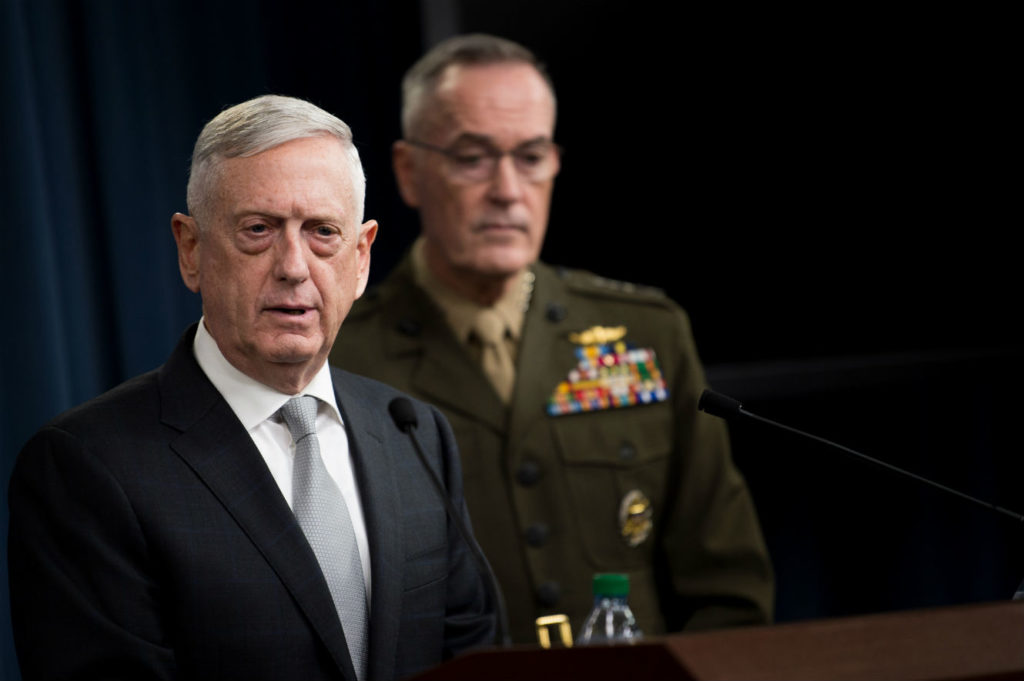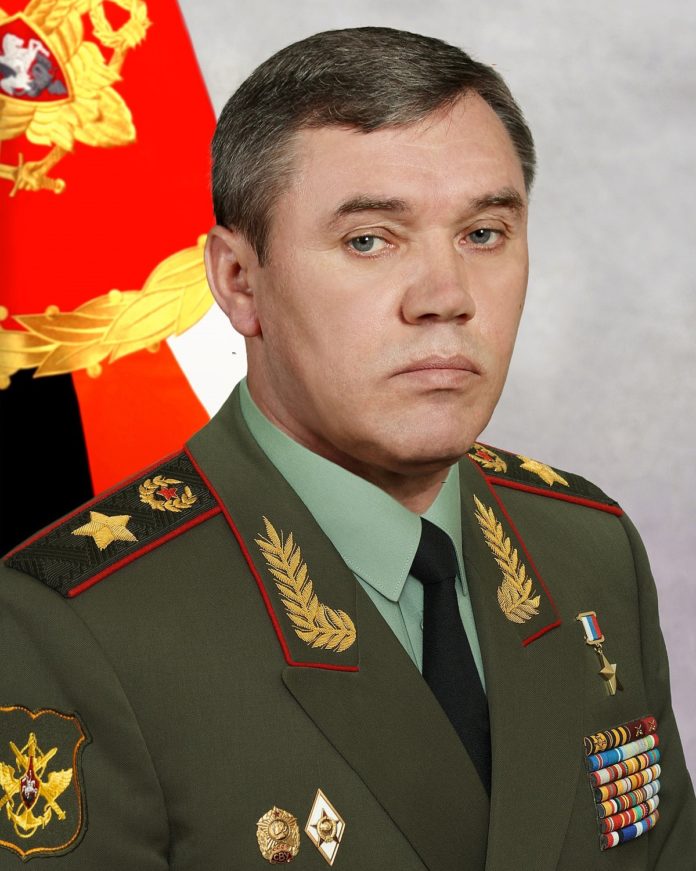Regular readers of the Defence Journal will be familiar with the Chief Editor’s recent articles on Hybrid Warfare and its contemporary significance. Recognising the significance of the need for further coverage of the subject, this piece will be part of a series attempting to provide insight towards defence policy decision making. Hybrid warfare as a concept has now become necessary for the theoretical understanding of contemporary defence and geo-political issues as they appear to those responsible for dealing with defence and security concerns at various levels. The result of doing so would be beneficial in terms of costs saved, both monetary and human, and provides the basis for capacity to make accurate long-term policy decisions at higher levels.
Historical and Current Precedent: Us and Britain at the forefront
The usage of a combination of multiple methods to achieve political or military goals is not new, but has new significance being seen by top brass as the main trend in future military engagement. This is seen as significant in context of the New Cold War taking shape as Western systems of governance begin to lose their original scope of influence. As a phenomenon, it has roots in multiple historical examples where conventional state military came up against smaller, less sophisticated forces, or used them in collaboration against larger enemies. Researchers cite events such as the American Revolution, where George Washington used his Continental Army along with robust militia forces. During the Napoleonic Wars, British regulars challenged French control of major Spanish cities, whilst Spanish guerrillas attacked their lines of communication. One of the more relevant historic examples in the Pakistani context was the end of the caliphate, where the British empire orchestrated the militarisation of Bedouin tribes against the Ottoman Empire. Psy-ops in this example simply consisted of originating the Wahhabi ideological movement, which involved declaring all of the Arab Sunni Muslims to be heretics until they accepted the new doctrine of Muhammad Ibn Abdul Wahhab, just as their contemporaries are doing now. Those who accepted the new ideology would then be submissive to the regime change, abandon loyalty to the caliph, and hence any extra-colonial activities that followed as a result.
The latest wave of radical militant movements against Arab states saw the rise of ISIL, who used a mixture of cyber-attacks, social media recruitment, foreign patron age, video propaganda and standard guerrilla warfare. When seen in context of the basic formula for HW, the Arab revolt was one of the major contemporary examples of hybrid attack strategy, consisting of a textbook deployment of the key stages of psy-ops, colour revolution, and then regime change. The impact of that original act of subversion gave root to the arc of crisis [courtesy Zbigniew Brzezinski] that has engulfed the Middle East until the present day, resulting in severe losses to both the indigenous population and the colonists. The current wave of renewed interest in hybrid war among circles of power s significant due to its ability to create advantage to smaller states or nonstate actors, many of whom are terrorist groups or insurgents of some kind, whose ability to understand and utilise hybrid war in the current climate creates significant challenges for Western nation states and their allies in maintaining control in those regions affected. In hindsight, the hybrid threat to Western nations are to be expected as a basic consequence of their his tory of intervention and militarisation of local forces to assist in political goals. The key precedent cited to describe the recent emergence of hybrid threats is that of the Israel-Hezbollah war, sparked off by Hasan Nasrullah’s kidnapping of Israeli soldiers. Hezbollah acted in its capacity as a militarised nonstate actor, as a proxy of Iran, the larger state actor, against the US allied nation state, Israel. This trio forms both the basis of the hybrid threat framework and accurate current geo-political analysis of the situation in the Middle East.
During the 2006 exchange, guerrilla cells in combination with regular troops launched an unconventional urban warfare campaign against Israel, armed with missiles, rockets, UAVs, and advanced IADs. Hezbollah cells downed Israeli helicopters, damaged Merkava IV tanks, used encrypted communications, and monitored Israeli troop movements with night vision and thermal imagery devices. The manipulation of real time information showed the integral role of psy-ops in creating an image of victory, as fighters immediately uploaded and distributed battlefield pictures/ videos in real time, enabling Hezbollah to appear superior on the international stage, winning the war of perception through usage of strategic information.
A Complex New Geo-Political Paradigm: Multiple Actors, Multiple Agendas
The usage of non-state actors and their role in contributing to the situation of the Middle East truly lies at the Centre of any proper under standing of hybrid threat perception, forming a key base for the accurate analysis and formation of defence policy ideas in this region. Seen in proper context, the attempts to understand the future of warfare practice, and the role of hybrid war fare strategies in this regard originates solely with the activities of the non-state actor, either through their own agendas, or the way they are used by larger state actors; the two of which often overlap. In the scenario presented we have three main types of political actors, each with their own internal and external priori ties, constantly shifting based on expediency, with less guarantee that we can predict or anticipate their agendas. The general goal of the non-state actor is usually to achieve some sense of independent governance away from the host state, in response to which it shapes its own policy. The role of the host state is to maintain its sovereignty and appear strong in its governance capacity, in order to ward off any potential intervention from the US/Allies. The goal of the US is usually to perceive any small degree of threat to the ability of the host nation to defend itself, and form a pretext based on which intervention initiatives can be followed through. The complex variances of policy and smaller strands of strategy, along with the politics of the situation in real-time present a much more complex, gray-zone scenario to be tackled by the individual Defence policy thinker than has ever been presented before. The ambiguous nature of what any one particular actor may do in a given situation will undoubtedly increase the need for clear communication, as the risk of acting out of fear and assuming the others’ course of action in the heat of the moment is significantly higher.

Theoretical Understanding: US and Russian Methodology at a glance
For the understanding of readers, discussion on hybrid warfare is synonymous with various terms as follows: irregular warfare, compound warfare, guerrilla warfare unconventional warfare, unrestricted warfare, ambiguous warfare, area-terrorism; asymmetric warfare, surrogate warfare, 4GW, proxy Nar, shadow war, Four Block war, and so on.
In terms of military strategy, the understanding of Hybrid Warfare is of central importance mainly to the US and its allies, being studied as a new form of combat being adopted oy entities hostile to their interest. General Hoffman/Mattis’ study on the subject is often cited to describe the nature of hybrid warfare tactics used by the new wave of hostile militia groups. This involves a combination of ‘conventional capabilities, irregular tactics and formations, and terrorist acts including indiscriminate violence, coercion and criminal activity’ simultaneously.
The United States Special Operations Command [USSOCOM] defines unconventional warfare: Activities conducted to enable a resistance movement or insurgency to coerce, disrupt, or overthrow an occupying power or government by operating through or with an under ground, auxiliary and guerrilla force in a denied area” [This definition was approved as far back as May 2009, see Training Circular 18-01, Special Forces Unconventional Warfare, December 2010. This is in accordance with Title 10 of US Code which lists UW as a type of military activity]. In terms of military policy, the various categorisations of special operations include UW as part of a series of special forces activity which also include elements such as counter-terrorism [CT], direct action [DA], foreign internal defence [FID], special reconnaissance [SR], security force assistance [SFA], counter insurgency [COIN], direct action [DA], military information support operations [MISO], and civil affairs operations [CAO]. These are the main operations types under which UW also falls, classing it as an accepted part of US military strategy and also pol icy under ARSOF [Army Special Operations Forces].
General Hoffman defines hybrid warfare, in context of the threat emerging from state actors as “combination of conventional and irregular warfare tactics, terrorist incidents, indiscriminate violence and criminal disorder, which its enemies will employ tactically and in co-ordination within the battlefield, target population and international environment in order to achieve the benefits of scale, and ripple effects generated by force multipliers”. Based around this, it is understood that the US military establishment is using this understanding to frame both offensive and defensive security policy under a ‘whole of government’ approach as advocated by General Hoffman.
Further trends that typify this kind of actor includes rapid progress in capabilities and sophisticated combination of different methods/ tactics which would not usually be considered as within their capacity. Merging various forms of technologies and capabilities simultaneously and within the same battlespace make users of hybrid strategies particularly difficult for large state actors, particularly in context of the US’ GWOT which now includes IS as the primary target. This perception of the hybrid threat is unique to the US/Allies, and does not describe the nature of hybrid threat faced state-to-state, which is the analysis lens used by General Gerasimov, whose study of the subject is based around the con text of anticipating US foreign military initiatives. When looking at state-on-state usage of HW methods, a key principle is that any measures deployed will have to be considerably subtle and below the radar in order to avoid acceleration into major, conventional conflict.
From this juncture, mentioning General Gerasimov bears logical significance, with specific reference to his essay of 2013, where he described a new theory of ‘non-linear warfare ‘ whereby a state could deploy every other means of offensive strategy to cripple their opponents before kinetic military intervention would even be necessary. This was his descriptive research of the situation, but after Western analysts saw it being used directly in Russian foreign policy, as per the Crimean annexation, it was later termed the ‘Gerasimov Doctrine’. Building on our theoretical understanding of the subject, the so-called Gerasimov Doctrine emphasised that non-military means were far more effective in achieving political goals and should be pursued instead of traditional kinetic warfare. It predicted the growth of hybrid warfare in future, consisting of covert deployment of insurgents and paramilitary, coordinating the activities of these special actors alongside activities within the ‘information battlespace’. He believed that future warfare would include this at its root, later supplemented by added elements including drones, attacks on critical infra structure and co-ordination of civilian insurgents. Upon reflection, it is the deployment of defence capacities in a creative, co-ordinated fashion with special forces deployed covertly at the root, with psy-ops, infrastructure damage, and civilian insurgent manipulation as the branches. It may appear that what he anticipated in 2013 is now already in full swing and has become the norm of sophisticated state actors globally. In this equation, regular forces are restricted to much later in the offensive process, used under the guise of peacekeeping to prevent target nations declaring conventional kinetic war.

Hybrid Threat Monitoring Mechanisms: An Intelligence Based approach to Defence
The 2006 conflict framed the concept of HW in relation to a US based military understanding used to categorise threats in the form of political actors who contested the status quo. In the Pakistan defence perspective, it is a useful framework to monitor and preempt hostile subversion launched by India and a call for revision of conventional military assumptions regarding the nature of best practice. It calls into revision the actual task of defending a nation and its critical infrastructure, identifying where the threats to sovereignty truly lie, and where the threat priorities should really be. Furthermore, it is understood as an offensive tool which global powers are using and into which we must evolve eventually.
The physical depiction of a basic version of the ‘whole of government’ approach has been out lined by Hoffman/Mattis in their Joint Chiefs of Staff Report on the JOE: Joint Operating Environment 2035, which predicts trends that will typify military activity in future, based on various environmental factors . Another key model which seems to encourage governments to learn how to anticipate and form security strategies in relation to the new breed of hybrid threats is presented in the UN ACT MCDC Report on Understanding Hybrid Warfare [Multinational Capacity Development Campaign]. Here, threats are analysed in relation to main vectors: 1) Targets of attack, termed PMESll [Political, Military, Economic, Social, Information, Infrastructure] and 2) Methods of attack, termed MPECI [Military, Political, Economic, Civilian, Information], which are synonymous with state capacity to act in a co-ordinated manner. Hence, if a particular nation is not able to significantly co-ordinate the activities of different aspects of the key components of state, they fall short of defence capacities necessary to meet the challenges of the hybrid age. As per the recommendations of the report, the minimum type of measure advocated in this regard is establishing and maintenance of a monitoring and response system to look at all potential targets across the PMESll spectrum, analyse vulnerabilities of critical infrastructure, and deploy protective measures with regular revision of possible threats in relation to perceived hostile actors.
Key Sources and Concise Further Reading
-For more on the “Four Block War” see “Future Warfare: The Rise of Hybrid Wars”, Proceedings Magazine, U.S. Naval Institute, LTG James Mattis and LTC Frank Hoffman, November 2005.
Hybrid Warfare: Fighting Complex Opponents from the Ancient World to the Present’, Murray & Mansoor. Cambridge University Press. 2012.
UN ACT, Multinational Capability Development Campaign, Countering Hybrid Warfare Project: Understanding Hybrid Warfare. MCDC Jan 2017. Cullen & Reichborn [NUPI- Norwegian Institute of International Affairs]
Katie Abbott, ‘ Understanding and Countering Hybrid Warfare: Next Steps for the North Atlantic Treaty Organization’, Research paper. University of Ottawa. Supervisor, Professor Roland Paris.
-Joint Operating Environment 2035, ‘The Joint Force In A Contested and Disordered World’, July 2016. Hoffman & Mattis.
-Center for Strategic and International Studies. ‘Getting Gerasimov Right’, Charles. K. Bartles.
– ‘Understanding Russian ‘Hybrid Warfare ‘: And What Can Be Done About It’. Christopher S. Chivvis. RAND Corporation.
-‘Value of Science Is In The Foresight, Russian COAS Valery Gerasimov. Military Review. Jan. 2016.
-‘A New Paradigm for Stability Operations In Failing States’. Col. Margaret Bond. US Army War College Strategy Research Projects.




